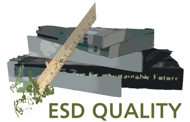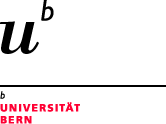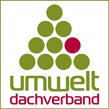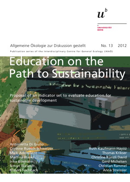Indicators for ESD Conference 2012Reports on the implementation and transfer workshopsIn the implementation and transfer workshops participants from Austria, Germany and Switzerland discussed the conditions and possibilities of implementation in their country, meeting in different groups. A group of international participants discussed the transferability of the proposed ESD indicators or methodology used by other countries. The discussion questions were:
Conditions and possibilities of implementation in AustriaIn our group we concentrated mainly on indicators concerning universities, as in this sector there was the most experience between us: Criteria 03a, 03b and 08. Some initiatives have already been implemented:
In Austria, universities are autonomous institutions: they cannot be forced to follow instructions from the ministries, but nevertheless some instruments could stimulate the implementation of ESD in universities.
Following previous experiences it is necessary to be very flexible concerning surveys and demands (allow for broad interpretation). To achieve success it is also important to provide a list of criteria for this performance indicator. (Emerging questions for surveys: Would it be good to screen for the term SD appearing in the description of curricula? How should the amount of ECTS be measured for the SD part? Should there be a percentage of SD elements in the LV? Should an application for the sustainability award count as an indicator?)
An additional question we discussed: What other purposes could the indicators for ESD be used for? They could serve as an awareness raising factor for higher education institutions; they could initiate or foster a learning process. For the end of the ESD decade a report on the ESD performance of Austria is due. The ESD indicators could serve as supportive indicators to prepare for the reporting (but of course UNESCO has its own special indicator set). Conditions and possibilities for implementation in GermanyIn the transfer workshop 8-10 people from Germany discussed the set of indicators that emerged from the international project. These people represented quite different institutions: they were from the Ministry of Culture, from educational institutions, from scientific institutions as well as from various associations and interest groups. The debate in the Transfer Workshop centred round ways of disseminating and applying the set of indicators. Concerning dissemination, participants discussed the possibilities open to them within their institutions, or, externally, as members of these institutions. Thus, there was reflexion on communicating the project indicators, e.g., via newsletter, or within the framework of membership in other associations, such as various working groups of the UN-Decade project “Education for sustainable development”. In such communications, workshop members felt it was important to clearly advise future users that application of the indicator set involves considerable time and effort due to the somewhat problematic availability of information. However, participants unanimously felt that the indicators are a “message” which should reach as many people as possible who are active in the field of education for sustainable development. A further topic of discussion was which actors should be targeted so that they could also function as multipliers in disseminating the set of indicators. Several members of the transfer workshop undertook personally to ensure that the set of indicators would be fed into appropriate ministerial or UN-Decade-specific communication channels as soon as they returned from the indicator conference. There was also unanimity, after the very laborious formulation of the indicators within the framework of an international research project involving actors from very different interest groups, that the focus now absolutely had to be on applying as well as disseminating the indicators. In so doing, it was immaterial whether a few of the indicators were not usable or had little meaning, possibly due to difficulty in obtaining a relevant database. Such a situation should not prevent anyone from applying the indicators and thereby determining the implementation status of education for sustainable development in the various areas of education. At this early stage, it was also of lesser importance that the indicators could have been tweaked to fit individual pedagogical spheres of activity more accurately to make them more attractive. All workshop participants were convinced that, taken as a whole, the set of indicators provides a viable means of conveying the main ideas of education for sustainable development: if it is known which aspect of education for sustainable development the indicators are focusing on, their use will also contribute to the long overdue clarification of the central concept. Participants also agreed that in both dissemination and application of the indicators, one should expect a slow evolution rather than a revolution in thinking. But slow progress in dissemination and application of the indicators should not discourage people from adhering to them and developing them further. Conditions and possibilities for implementation in SwitzerlandIn their workshop, the participating experts from Switzerland noted that several aspects speak in favour of promoting the implementation of the indicators. From a strategic point of view, indicators are necessary for the integration of education for sustainable development (ESD) into the education system. Although some details of the present indicators may be criticised, they are nevertheless so much clearer and better in comparison with other ESD indicators that they should be used in any case. The sooner the implementation process of the ESD indicators begins, the more their acceptance can be assured. Therefore, one demand that emerged from the Transfer Workshop was to promote implementation of the present indicators on the political level as well as to develop them further in terms of content (e.g. development of competence models, creation of reference values, undertaking qualitative evaluation). Regarding the whole field of ESD, the following basic gaps in the indicators were identified, which should eventually be dealt with and then also formulated as part of the indicators: the linking of abstract competences with content topics relevant to sustainability; integration of a value component in the question about competences; more precise evaluation of the quality of implementation; the implementation of indicators aiming at the macro-level does not replace efforts towards a high quality of implementation of ESD at the mid- and micro-levels, as shown by the implementation of PER (Plan d’études romand). Probably the gap that should be closed most urgently, which is also noticeable in the present set of indicators, is the lack of a means of measuring competences quantitatively. The main outcome of the workshop is the intention to strive for an ESD chapter in the Swiss Education Report 2014. This is particularly desirable since the ESD-decade ends in 2014. Such a chapter should characterize ESD, but, on the other hand, the systematic application of all indicators should not be regarded as compulsory, as such a strict interpretation would block the goal of ESD’s inclusion in the Swiss Education Report 2014. Rather, the central tenets of ESD could be illustrated on the basis of several selected indicators. A further parallel demand is a preliminary collection of data on as many indicators as possible, so that the requisite information for systematic application of the indicators is available. In the course of this, the indicators could be adapted as necessary to the latest developments in the field of ESD in Switzerland. Finally, the question was discussed as to who in Switzerland was authorised to collect the relevant data and who, therefore, could be mandated to do so. All participants agreed that this question would be among the first to be answered when a comprehensive application of the indicators was seriously envisaged. Participants were reminded that a special agency for ESD, which will be newly founded next year, might be so authorised and could therefore be a mandated actor that would, with the support of academic experts, push implementation of the indicators. In view of this, the next meeting will be planned as a joint meeting of project team, special agency, decision makers and other interested parties. Transferability of the proposed ESD indicators/methodology used in other countriesParticipants from 11 countries discussed the desirability of making ESD an official part of educational reporting and finding possible ways for transferring the proposed ESD indicators. There was considerable agreement on the fact that indicators ought to be seen as a helpful strategic tool for argumentation both on the national and international level because they fit into the system, contribute to complexity reduction and allow for evaluation and feedback into the educational system. With regard to the international level, the absence of national data is seen as a problem, as is the lack of coherence of questions asked in existing surveys. To define a common frame of reference for ESD and appropriate indicators we recommend taking the cultural dimension into consideration more. Furthermore the integration of the micro level is seen as an important requirement, although this might entail methodological difficulties with regard to collecting qualitative data. With regard to implementation it is important to ask who the data is for (politicians or educational institutions) and for what purpose they are collected (internal vs. external use). The participants agree that the preferred intention for the use of indicators should not be measuring or benchmarking for comparative purposes but to monitor progress, engage people and enable self-monitoring and, thus, reflects changes and learning processes. In this regard, various examples from different attending countries were mentioned that have been worked out for different educational levels, e.g. in supporting schools or higher education institutions in processes of self-assessment. The proposed ESD indicator set was unanimously appreciated as a groundbreaking start in accelerating this approach towards further cross-country activities.w |
|
Publication
|
|
Contact Information
esd quality, Research Group Inter-/Transdisciplinarity |


 Impressum
Impressum



 Education on the way to sustainability. Proposal of an indicator set to evaluate education for sustainable development.
Education on the way to sustainability. Proposal of an indicator set to evaluate education for sustainable development.